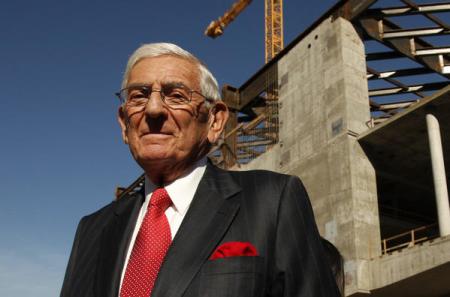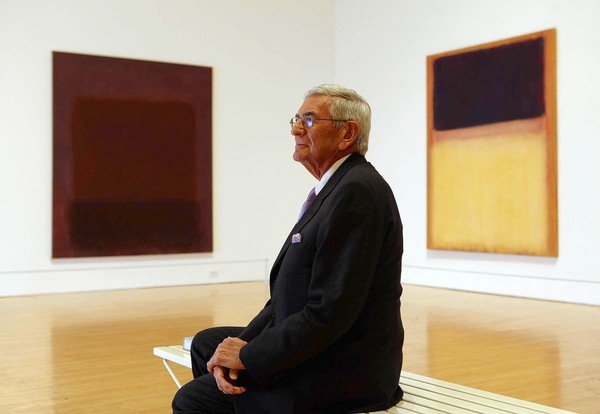Posts Tagged ‘Bunker Hill’
Chapter 1 (Part 3): MOCA’s White Knight
“I had no intention of getting involved in MOCA, until it got into trouble”[i]
– Eli Broad
In fall 2008, a long-term beneficiary of Eli Broad’s largesse was in alarming financial trouble; the Museum of Contemporary Art (MOCA) could no longer hide its vertiginous financial mess. In an article titled “L.a.’s Moca In Deep Financial Trouble,” the Los Angeles Times reported MOCA had mismanaged its finances for more than a decade.[ii] The board of trustees had almost completely drained the $200 million endowment by regularly dipping into it to cover costs of expensive exhibitions and operating overhead; overspending an average $1 million a year since 2000.[iii] The public was shocked and enraged; consequently, there was a rapid exodus of board members.[iv] MOCA needed a hero with a rescue plan.
LACMA’s Michael Govan proposed one rescue plan: a partnership in which MOCA would maintain its independence and retain at least one of its venues (the Geffen Contemporary in Little Tokyo) and in exchange MOCA would share its collection with LACMA.[v] Details of the offer were never fully disclosed, but it seemed to be Govan’s attempt to secure a large and well-regarded contemporary art collection for LACMA, and a way to reduce (if not eliminate) LACMA’s need of the Broad collections.
Govan’s offer seemed to be the final straw in the already strained relationship between him and Broad. Broad openly chastised Govan in the Los Angeles Times for his proposed merger plan, and curiously quoted the film Jerry McGuire to demand, “Show me the money.”[vi] Broad had proposed his own rescue plan and was offering a $30 million lifeline to MOCA. Govan was meddling in his plans.
Chapter 1 (Part 1): One Eli Broad Too Many, Or Not Enough?
“Eli is not the problem. The problem is that we don’t have enough Elis in Los Angeles to balance out his generosity and the power of his influence.”[i] – Ann Philbin, Director, Hammer Museum
Photographs of Los Angeles from fifty years ago capture an unfamiliar city. In the 1960s, downtown’s Bunker Hill was still occupied by a row of quiet Victorian houses. Since then, the Victorians have been cleared away and the city has experienced a population boom often illustrated as a mushroom cloud-shaped diagram, and now boasts a population of 9.86 million.[ii] While established in many ways, Los Angeles’s philanthropic culture is still in its infancy. Despite ranking the second most populous city in America, the quantity of powerful philanthropists is insignificant at best. Those who are active give to educational, environmental, health, and political causes.




